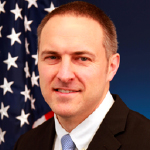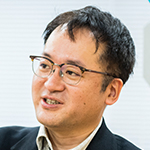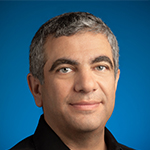PLENARY, PANELS and LUNCHEON
Plenary, Panel Sessions and Luncheon
- Technology Plenary Session
-
Tuesday morning, June 11, 2019

“Managing Moore’s Inflection: DARPA’s Electronics Resurgence Initiative” William Chappel , Director, Microsystems Technology Office (MTO), Defense Advanced Research Projects Agency (DARPA)
Bio:
Dr. Chappell joined DARPA as a program manager in July 2011 and became Director of the Agency’s Microsystems Technology Office (MTO) in June 2014. His interests include advanced packaging, adaptable RF systems, and antenna arrays.
Prior to DARPA, Dr. Chappell served as a professor in the Electrical and Computer Engineering Department of Purdue University, where he also led the Integrated Design of Electromagnetically-Applied Systems (IDEAS) Laboratory. His research focus has been on high frequency components, specifically the unique integration of RF and microwave components based on electromagnetic analysis. This ranged from advanced RF sensors such as miniature RF ion trap mass spectrometry to advanced digital-at-every element antenna arrays. Dr. Chappell has conducted extensive research on the development of adaptable RF systems, focusing on tunable preselect filters. He has shown the ability to design a single RF system that is adaptable to numerous application areas and/or adjustable to dynamic changes within the spectral environment.
Dr. Chappell is the recipient of many research and teaching awards. He has been the advisor of numerous IEEE MTT International Microwave Symposium best paper finalists and a coauthor of two best papers at the GOMACTech conference. His paper on wearable MIMO systems was selected for the best journal paper at the IEEE VT Society in 2009. In 2011, he received the ARL Director’s Coin for his work on standoff inverse analysis and manipulation of electronic systems MUIR analyzing the effects of nonlinearities in high power systems. He was selected as a Collaborative Investigator by the Howard Hughes Medical Institute for work on RF implantable systems and to join the Frontiers of Engineering meetings sponsored by the National Academies of Engineering.
Dr. Chappell received his Bachelor of Science in 1998 from the University of Michigan, where he graduated summa cum laude. He received his Masters and Doctor of Philosophy, also from the University of Michigan, studying in the Radiation Laboratory on spectral isolation techniques for high frequency microwave systems using composite materials.Abstract:
In June 2017, the DARPA Microsystems Technology Office (MTO) announced the upwards of $1.5 billion Electronics Resurgence Initiative (ERI) to ensure far-reaching improvements in electronics performance well beyond the limits of traditional scaling. The gains that came as electronics technology sprinted forward according to Moore’s Law were not guaranteed but realized through ingenuity and close collaboration between commercial industry, academia, and government. The present moment, beyond his law, is where Gordon Moore had true prescience. ERI is building on the long tradition of successful partnerships to foster the environment needed for the next wave of U.S. and allied semiconductor innovation.
Wednesday morning, June 12, 2019

“Si Platform for Developing Spin-based Quantum Computing” Seigo Tarucha, Deputy Director, RIKEN Center for Emergent Matter Science, RIKEN, and Tokyo Univ. of Science
Bio:
Seigo Tarucha received the B. E., M. S., and PhD degrees in applied physics from the University of Tokyo in 1976, 1978, and 1986, respectively. He joined NTT Basic Research Laboratories in 1978 and moved to the University of Tokyo as a professor in 1998 and is affiliated to RIKEN since Apr. 2019. He has been working on quantum transport and correlation effects in semiconductor nanostructures and spin-based quantum computing with quantum dots. He received Japan IBM award in 1998, Kubo Ryogo award, Nishina award in 2002, National medal with purple ribbon in 2004, Leo Esaki award in 2007, and Achievement award of Japan Applied Physics Society in 2018. He is a fellow of Japan Applied Physics Society and IOP.
Abstract:
To date basic techniques of implementing spin-based quantum computing have been developed using quantum dots, including single and two-qubit gates, initialization and readout. But improving the operation fidelity as well as increasing the qubit number is still a challenge in realizing fault-tolerant quantum computing. Electron spins confined to Si quantum dots have a long decoherence time and the physical area for implementing a qubit is very small, smaller than 0.1 mm2. We have developed a fast gating technique for the Si quantum dots to operate the qubits with high fidelity thanks to the weakness of decoherence. I will first discuss the spin dephasing measured for Si quantum dots and how to suppress it to raise the gate fidelity well exceeding the threshold of fault tolerant computation. I will then review the current research and development to scale up the qubit system, including integration technologies of the quantum processor and cryo-electronics to improve the performance of the large-scale quantum circuit.
- Circuits Plenary Session
-
Tuesday morning, June 11, 2019

“Virtual Cyborg: Beyond Human Limits”
Masahiko Inami, Ph.D. Professor, Research Center for Advanced Science and Technology, the University of TokyoBio:
Dr. Masahiko Inami took up his current position as professor at the University of Tokyo after working at the University of Electro-Communications and Keio University. His interests include “JIZAI body editing technology,” the Augmented Human, and entertainment engineering. He has received several awards, including TIME Magazine’s “Coolest Invention of the Year” award and the Young Scientist Award from the Ministry of Education, Culture, Sports, Science, and Technology (MEXT). He is also the co-representative of the Superhuman Sports Society and a director of the VR Consortium. His latest book is called “Birth of the Superhuman! Human Beings Beyond Science Fiction (NHK Publishing, Inc).
Abstract:
The social revolutions have accompanied innovation of the view of the body. If we regard the information revolution as establishment of a virtual society against the real society, it is necessary to design a new view of body “JIZAI body (Virtual Cyborg)”, which can adapt freely to the change of social structure, and establish a new view of the body.
In this talk, we discuss how we understand of basic knowledge about the body editing for construction of JIZAI body (Virtual Cyborg) based on VR, AR and Robotics. Superhuman Sports: Applying Human Augmentation to Physical Exercise.
This talk will also present Superhuman Sports, a form of “Human-Computer Integration” to overcome somatic and spatial limitation of humanity by merging technology with the body. In Japan, official home of the 2020 Olympics and Paralympics , we hope to create a future of sports where everyone, strong or weak, young or old, non-disabled or disabled, can play and enjoy playing without being disadvantaged.Wednesday morning, June 12, 2019

“Computational and Technology Directions for Augmented Reality Systems”
Sha Rabii, Ph.D, Vice President and Head of Silicon, Facebook Inc.Bio:
Dr. Rabii is Vice President and Head of Silicon at Facebook where he has established and scaled the silicon engineering organization with a focus on AR and VR products. His team pushes the frontier on computation, artificial intelligence, communication interfaces, sensing and display technologies. Prior to Facebook he held senior leadership positions at Google where he founded the silicon engineering and the technology engineering groups. His teams delivered the Pixel Visual Core, the Titan Secure Element and many other components into Google’s consumer hardware products and datacenters. Dr. Rabii was founder or member of the founding team at Arda Technologies, Aeluros and Atheros Communications. He earned a Ph.D. in Electrical Engineering from Stanford University in 1998.
Abstract:
Augmented reality (AR) is a set of technologies that will fundamentally change the way we interact with our environment. It represents a merging of the physical and the digital worlds into a rich, context aware and accessible user interface delivered through a socially acceptable form factor such as eyeglasses. One of the biggest challenges in realizing a comprehensive AR experience is managing power consumption to ensure both adequate battery life and a physically comfortable thermal envelope. This presentation reviews advanced concepts in minimizing power in data transfer across components, leveraging highly efficient accelerators while maintaining programmability, and the potential of emerging nonvolatile memories for low power computing
- Luncheon
-
Thursday, June 13, 2019

“Developing Visual Systems for Entertainment and Art”
Speaker:
Yuya Hanai, RhizomatiksBio:
Yuya Hanai is a software engineer at Rhizomatiks. He received B.S. and M.S. degree from Keio University in 2008 and 2010 respectively. After graduating from university, he started working at Sony corporation as an R&D software engineer and was engaged with AR(augmented reality) technology development. He moved to Rhizomatiks in 2014 and was engaged with development of novel visual systems such as “Seamless MR”, “Dynamic VR” and “interactive Laser”, developed in the projects for famous artists from home and abroad, such as Björk. At Ars Electronica 2016, He was awarded “Award of Distinction” for Nosaj Thing’s Music Video “Nosaj Thing / Cold Stares ft. Chance The Rapper + The O’My’s”, which he was mainly engaged with camera system development.
Abstract:
Rhizomatiks Research is our division dedicated to exploring new possibilities
in the realms of technical and artistic expression.
Focusing on media art, data art, and other RD-intensive projects, our team strives to deliver cutting edge solutions that have not yet been seen on a global stage.
Rhizomatiks Research is accountable for all steps of a project, from hardware/software development up through operation. Additionally, we study the relationship between people and technology, and collaborate on projects with a myriad of creators.
In this presentation, we’ll introduce our past projects which mainly utilized vision technologies such as AR/VR. - Technology Evening Panel Discussion
-
Tuesday evening, June 11, 2019
What Will the Foundries of the Future Do?
Organizer(JFE):
Masaharu Kobayashi, Univ. TokyoModerator:
Anton DeVilliersPanelists:
- Kaizad Mistry: VP of technology & manufacturing, Intel
- Anthony Yu, VP of Si foundry, GF
- Chidi Chidambaram, VP of Si tech/foundry, Qualcomm
- Paul Jung, Samsung VP
- Takayuki Ohba, Tokyo Tech., Univ
- Kevin Zhang, VP of business development, TSMC
Conventional process node scaling has been extremely successful for many decades, but the challenges below 5 nm may require us to question our assumptions about the foundries of the future if we want the semiconductor industry to thrive in the next decade:
・Is EUV enough for patterning requirements? What is a key stopper?
・How long can FinFET/nanowire/nanosheet push the silicon MOSFET?
Will something different be required?
・How specifically can “More-than-Moore” provide value beyond scaling?
・How much can 3D chiplets provide?
・Are there opportunities for other fab styles? Minimal fab vs. giga fab?
In this panel, we will discuss technology challenges and opportunities as well as new deliverable values to market, in order to provide perspective on the foundries of the future. - Joint Evening Panel Discussion
-
Monday evening, June 10, 2019
The semiconductor industry at a tipping point: what’s next?
Organizer(JFE)
- Patrick Yue, HKUST
- Masaharu Kobayashi, Univ. Tokyo
- Kenichi Okada, Tokyo Institute of Technology
Organizer(NAE)
- Eric Naviasky, Cadence
- Greg Yeric, ARM
Moderator:
- Kofi Makinwa, TU Delft
Panelists:
- Bram Nauta, University of Twente
- Falan Yinug, SIA
- Alessandro Piovaccari, Silicon Labs
- Shusaku Sumida, Woodside Capital Partners
- Jonathan Chang, TSMC
The field that has transformed the world and which we have annually gathered to celebrate is undergoing a metamorphosis. Economics no longer inexorably points down Moore’s curve, price per gate has leveled or is rising. The leading edge nodes have become the territory of the very few companies that dare to use them. Simultaneously, the number of startups has shrunk by orders of magnitude. So where are we going? Together with you, a panel of experts with backgrounds ranging from academia, industry association, and companies from start-ups to established will attempt to provide some insights into our future.
- Circuits Evening Panel Discussion
-
Tuesday evening, June 11, 2019
Technology We Will See Coming Out of the Tokyo Olympics and Beyond
Organizer(JFE)
- Masanori Natsui, Tohoku Univ
- Kenichi Okada, Tokyo Institute of Technology
Organizer(NAE)
- Stacy Ho, MediaTek
Moderator:
- Koichi Hamashita, AKM
Panelists:
- Jonathan Jensen , intel
- Michael Pate, Google
- Masayuki Mizuno, NEC
- Shoichi Masui, Fujitsu Lab.
- Yukihiro Kato, DENSO TEN Ltd.
- Pat O’Connor, Microsoft
The upcoming Olympic Games in Tokyo will feature not only the world’s best athletes, but also the world’s newest technologies. Many new and exciting technologies will be previewed for the world to see, including 5G, IoT, AI, autonomous vehicles, AR/VR, sensors, and security. The panel will feature technologists who will give us a look behind these new technologies to the innovative circuits that make them possible.” (Note that this panel is not affiliated with the Tokyo Olympics)

